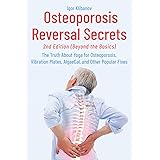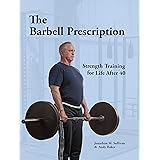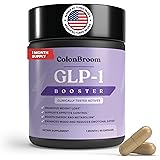Losing weight can often feel like an uphill battle, especially when faced with conflicting advice and overwhelming fitness routines. Yet, what if we told you that shedding significant pounds might be more about smart dietary shifts than grueling gym sessions? In a remarkable personal journey, our featured creator successfully lost an impressive 23 pounds, moving from 136 lbs to a steady 113 lbs since last December. This transformation didn’t rely on extreme exercise but rather on practical, sustainable lifestyle changes centered around diet and mindful eating. If you’ve been looking for realistic and easy weight loss tips that truly work, you’re in the right place.
The video above delves into these very strategies, offering a refreshing perspective that prioritizes consistency and patience over quick fixes. As the creator candidly shares, her approach is rooted in personal experience, not professional dietary advice, emphasizing that these are the principles that delivered real results for her. The core idea is simple: just as weight gain happens gradually, so too does weight loss. It’s about creating a calorie deficit – consuming fewer calories than your body burns – and making choices that are sustainable for your lifestyle. Let’s explore these foundational tips that empower you to lose weight and cultivate healthier habits without feeling deprived.
Embracing Consistency and Patience on Your Weight Loss Journey
Many embark on a weight loss journey hoping for immediate results, but true transformation is a marathon, not a sprint. Remember, the weight you gained likely accumulated over months, even years. Expecting it to disappear overnight is like trying to empty a swimming pool with a teacup – it’s just not realistic.
Consistency in your new habits, coupled with unwavering patience, forms the bedrock of sustainable weight loss. Think of your body as a garden; you wouldn’t plant seeds today and expect a full harvest tomorrow. Nurturing it daily, providing the right conditions, and waiting patiently are key. This steady approach ensures your changes become ingrained, leading to lasting success rather than fleeting victories.
Hydration is Your Secret Weapon: Drink More Water
One of the easiest yet most impactful changes you can make is to increase your water intake. Our bodies are largely made of water, and staying well-hydrated plays a critical role in numerous bodily functions, including metabolism and digestion. It’s like oil for an engine; without enough, things simply don’t run as smoothly.
The creator aims for 3-5 liters of water daily, significantly more than the average recommended 2 liters. Practical tips include keeping a glass by your bed to drink upon waking and before sleep, or carrying a large water jug to track your intake throughout the day. If plain water isn’t appealing, try infusing it with natural flavors like sliced strawberries, cucumbers, or a squeeze of lemon. This small change can make a monumental difference in curbing appetite and boosting overall well-being.
Mastering Mindful Eating: Eat Until You’re Full, Not Stuffed
A significant factor in unintended weight gain is often overeating, pushing past the point of satiety. The brain takes about 20-30 minutes to register that your stomach is full, which means if you eat too quickly, you can consume far more food than necessary before your body sends the “stop” signal. This is why slowing down and truly savoring your meals is crucial.
Before each meal, try drinking a glass or two of water. This helps fill your stomach, giving your brain a head start on recognizing fullness. While eating, consciously chew your food more thoroughly and put your fork down between bites. This intentional pause allows your body’s natural hunger and fullness cues to catch up, helping you avoid that uncomfortable, sluggish feeling of being overstuffed. Listen for that “light pressure” in your stomach, a gentle reminder that it’s time to stop.
The Art of Portion Control: Tricking Your Mind for Success
Portion control is a cornerstone of effective weight management. Our environment can subtly influence how much we eat, and our plates are no exception. Using smaller plates can visually trick your brain into thinking you have a larger, more satisfying meal. It’s like a psychological hack that encourages you to finish what’s there without overdoing it.
When dining out, remember that restaurants often serve portions far exceeding a single serving. Consider splitting a dish with a friend or asking for a to-go box immediately and boxing up half your meal before you even start eating. For home cooking, estimating portions can be simplified without measuring cups: a serving of protein can be about the size of your palm, carbohydrates like rice or pasta about a cupped hand, and fats like cheese or butter about the size of your thumb. These visual cues empower you to manage your intake effortlessly.
Navigating Sugars and Starches: Understanding Insulin’s Role
While often demonized, carbohydrates aren’t inherently bad. However, processed sugars and starches can be significant contributors to weight gain. These foods rapidly break down into glucose, triggering a surge in insulin production. Insulin, often called the “fat storage hormone,” directs your body to store excess glucose as fat.
By minimizing your intake of high-sugar and high-starch foods (think white bread, pasta, sugary drinks, many processed snacks), you can stabilize your blood sugar and reduce insulin spikes. This encourages your body to tap into its fat reserves for energy, rather than constantly storing new fat. The goal isn’t necessarily to eliminate these entirely but to make informed choices and consume them in moderation. For example, swap high-carb vegetables like potatoes and corn for low-carb options such as kale, spinach, and Brussels sprouts.
Harnessing the Power of Protein: Stay Fuller, Boost Metabolism
Incorporating a high-protein diet is a game-changer for weight loss. Protein takes longer to digest, helping you feel fuller for extended periods, which naturally reduces overall calorie intake. Furthermore, it has a higher thermic effect, meaning your body burns more calories breaking down protein than it does fats or carbohydrates. This can boost your metabolism by an impressive 80 to 100 calories per day.
Aim for 20-50 grams of protein per day, easily tracked with apps if you’re curious. Excellent sources include lean meats like chicken and fish (salmon, shrimp), eggs, and a variety of plant-based options for vegans and vegetarians. Starting your day with a high-protein breakfast, like eggs or Greek yogurt, can set you up for success by keeping cravings at bay until lunch.
Choosing Healthy Fats: Don’t Fear the Good Kind
The idea of a “no-fat” diet is often misleading and can leave you feeling deprived and unsatisfied. Healthy fats are essential for hormone production, nutrient absorption, and long-term satiety. The key is to distinguish between beneficial fats and those that offer little nutritional value.
When cooking, opt for healthy oils like olive oil, avocado oil, or coconut oil (though some controversy exists around coconut oil, using it in moderation is generally fine). These fats not only add flavor but also contribute to a feeling of fullness. Avoiding highly processed fats and trans fats, often found in fried foods and many packaged snacks, is more important than eliminating all fats. Embrace healthy fats as a crucial part of a balanced diet.
Strategic “Cheat Days”: A Sustainable Approach to Cravings
Completely cutting out beloved foods can lead to feelings of deprivation, potentially causing you to abandon your weight loss efforts altogether. This is where a strategic “cheat day” or “carb refeed day” can be incredibly beneficial. Designating one day a week to enjoy some of your favorite higher-carb or treat foods can satisfy cravings and make your overall dietary plan more sustainable.
The trick is to use it as a controlled release, not a free-for-all that extends into a “cheat month.” A moderate indulgence can reset your mental state and metabolism, helping you stick to your healthy habits the rest of the week. Remember, a slight water weight gain after a cheat day is normal and typically disappears within a couple of days as your body rebalances.
Beware of Liquid Calories: Cut Out Sugary Drinks
Many people overlook the hidden calories and sugars lurking in their beverages. Fruit juices, often perceived as healthy, can be loaded with natural sugars, making them akin to drinking a soda. Alcohol, particularly beer and sugary mixed drinks, also contributes significant empty calories that can hinder your weight loss progress.
Make a conscious effort to swap these out for healthier alternatives. Sparkling water with a squeeze of lime, unsweetened tea, or simply plain water are excellent choices. If you enjoy a bubbly drink, sparkling water makes a great mixer or “chaser” without the added sugar. Being mindful of your liquid intake is a surprisingly effective way to cut down on unnecessary calories.
The Often-Forgotten Key: Get Enough Sleep
While diet and exercise usually take center stage, the importance of sleep in weight management cannot be overstated. When you’re sleep-deprived, your body’s hunger hormones go awry: ghrelin (which stimulates appetite) increases, while leptin (which signals fullness) decreases. This hormonal imbalance can lead to increased cravings, especially for high-carb, sugary foods.
Additionally, staying up late often means more opportunities for late-night snacking, which can easily derail your calorie goals. Prioritizing 7-9 hours of quality sleep each night supports your body’s natural rhythms, helps regulate appetite, and gives you the energy to make healthier choices throughout the day. Think of good sleep as a cornerstone of your overall well-being and weight loss efforts.
Exercise: The 30% Boost to Your Weight Loss Journey
While the video emphasizes that diet is about 70% of the weight loss equation, exercise still plays a vital role, making up the remaining 30%. You don’t need to become a gym fanatic, but incorporating moderate physical activity can significantly accelerate your progress and improve your overall health. Even 30-60 minutes of moderate to intense exercise three to four times a week can make a difference.
The key is finding activities you genuinely enjoy, whether it’s running, dancing, cycling, or brisk walking. Adding some strength training, even with light weights or bodyweight exercises, helps build muscle, which in turn boosts your metabolism. Exercise is not just about burning calories; it improves mood, increases energy, and enhances body composition, supporting your weight loss goals in multiple ways.
Achieving your ideal weight, like losing 23 pounds, is a journey built on sustainable habits, not fleeting fads. By focusing on hydration, mindful eating, portion control, strategic food choices, and adequate sleep, you empower your body and mind to reach their goals. These easy weight loss tips prove that small, consistent changes are far more powerful than drastic, unsustainable ones. Remember, it’s about making peace with your body and fueling it wisely, not punishing it.











